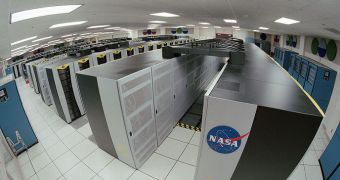As part of a project sponsored by the European Union, researchers at the University of Bristol in the United Kingdom are developing a computer with the ability to learn from the people it interacts with.
The team behind the research initiative hopes that the machine will in this manner become capable of executing complex, resource-intensive tasks, which experts would have otherwise had a difficult time programming into its memory.
The thinking goes that, if a robot sporting such a computer can learn how to do a thing on its own, then it will most likely find the most efficient and straightforward way of doing it.
“I'm sure many people have experienced that moment when they have no idea what their computer is doing and it appears to have absolutely no idea what they are trying to do,” says Dr Andrew Calway.
“Obviously this isn't a disaster when word processing, but it becomes a serious show stopper when we're trying to build systems that can genuinely help and interact with people,” adds the expert, who leads the Bristol team alongside colleague Dr Walterio Mayol-Cuevas.
Designing computer systems that are capable to understand and predict human behavior and activity patterns has been a long-standing goal in the field of robotics, but thus far no one managed to accomplish this objective.
According to Dr Mayol-Cuevas, who is based at the BU Department of Computer Science Computer Vision Group, this may soon become a reality, thanks to the €3.2 million EU-funded project, which is called “COGNITO.”
The team leaders reveal that one of the main areas of focus for the new system will be to investigate methods in which computers can achieve learning of human sensory-motor activities.
“In Europe, where many industries from family-run to large corporations rely on highly-skilled people, systems that assist in rapid training and quality control are essential,” says Dr Mayol-Cuevas.
He goes on to say that the high-precision industry is one of the main industry targeted by COGNITO. The project will seek to create robots that can learn to skillfully assemble and manipulate various components.
By combining on-body cameras with advanced computer vision algorithms, the Bristol team hopes to become able to monitor human activities, and then transfer the data into computers.
The machines will then observe and learn how people do various activities, and assimilate them as their own.

 14 DAY TRIAL //
14 DAY TRIAL //